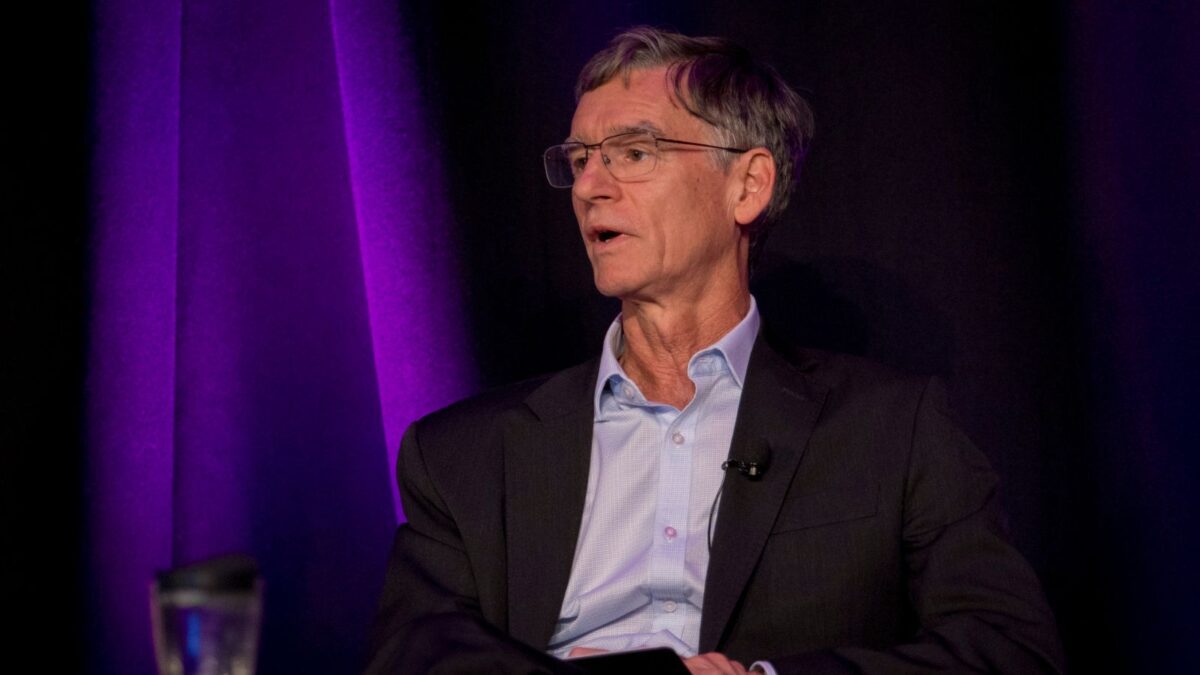Global Exchange gives a glimpse of the future for investing
(Pictured: Jeff Conway)
After about 25 years at State Street, Jeff Conway is born again as the head of the newest of the State Street “pillars’ – State Street Global Exchange. It has taken him awhile to “adapt to a new space, personally”, he says. But he has started communicating what the information age really means for investors and hopes to bring the message to Australia soon.
The majority of Conway’s career has had to do with “operationally heavy” areas of custody and securities servicing. While technologically dependent, they are very different from the frontier-exploring “operationally light” fields being worked on at the Global Exchange.
This fourth “pillar”, which was formed in April last year with the merger of various data, analytical and research areas of State Street into a single 850-person division, is exploring such emerging capabilities as capturing the power of “unstructured data” for fund managers and asset owners, which, at its extreme, could also be combined with machine learning to provide fully automated asset management capabilities.
Another possibility from Global Exchange’s work is that it could have a profound impact on the whole of the custody industry. “We are redefining custody,” Conway says. “There’s an important place for custody and safekeeping of cash and securities, of course. But there is also the custody of data.”
Global Services is the biggest pillar, by number of employees, within State Street. The other two pillars are Global Markets, which is the trading arm, and State Street Global Advisors, the funds management business.
Prior to his new role, Conway’s career included stints as head of the global services business in the UK, Europe, Middle East and Africa and, before that, as managing director of State Street Australia. He is now based back in Boston.
The head of Global Exchange for the Asia Pacific region is Ian Martin, who also heads up Global Markets regionally. He relocated from Sydney to Hong Kong in the middle of this year and was replaced by Chris Taylor, another State Street veteran. Martin will be accompanying Conway on the Global Exchange informational tour in the new year.
In the area of unstructured data, for instance, Global Exchange doesn’t actually have a product to sell as yet. “We’re defining what it means to innovate,” Conway says. “It’s partly to experiment in the spaces of grey. Unstructured data is definitely in that space.”
Unstructured data refers to that information which is gathered from ambient sources, such as reading a newspaper or analyzing phone records or monitoring twitter feeds for trends. Global Exchange’s work currently focuses on “media events”, looking for trends which can be fed into factor models for fund managers. “Price Stats” is another focus, which can provide early inflation indicators by mining a range of prices variously published on the internet. The gathering of the information is one challenge. Then there is its aggregation into a solution for clients.
The big shift for Conway, then, is from the back office to the front office in terms of what he is offering clients. “The market is changing rapidly, through new regulations, customers being over-run by data and new players entering, especially those with disruptive technologies,” he says. “So, our clients are changing at a rapid rate and State Street is thinking about how we have to change to remain relevant to clients… There’s an impetus for us to think about the business in different ways.”
The Asia Pacific region is featuring in two areas of significant investment for Global Exchange, to do with the next generation of risk management tools and with data aggregation. Conway says the firm is prototyping its next generation risk tools for “a couple of clients” in Asia and, in the data aggregation space, also has one of its prototypes in the region.
Emerging capabilities in data and information include applications for indices on private equity and real estate, data vizualisation, stress testing model validation and providing investable models.
With investment analytics, Global Exchange is looking to enable “look-through” capabilities and analytics on alternatives, which represent a concern for Australian super funds under proposed new APRA regulations stipulating that all underlying investments will need to be disclosed to fund members from next year.
With electronification of trading, Global Exchange is working on enhancements to e-FX platforms, such as streaming forwards and swaps, and expansion of e-trading and workflow solutions into ETFs, mutual funds and term deposits.
– Greg Bright










